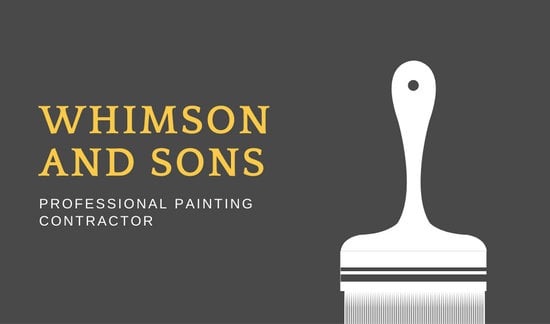Trick Seasonal Considerations For Commercial Exterior Painting: What You Required To Be Enlightened Regarding
Trick Seasonal Considerations For Commercial Exterior Painting: What You Required To Be Enlightened Regarding
Blog Article
Web Content Created By-Burnham Whalen
When you're intending an industrial outside paint task, seasonal elements can make or break your results. You'll intend to think about just how temperature level and humidity influence paint application and drying out times. Selecting the right period can guarantee your paint sticks effectively and lasts longer. Yet which seasons are genuinely the best for this kind of job? Let's discover the crucial elements that can affect your job's success.
The Influence of Temperature Level on Paint Application
When you're preparing a commercial outside painting project, the temperature level can substantially affect how well the paint sticks and dries out.
Preferably, you wish to repaint when temperatures range between 50 ° F and 85 ° F. If it's too cool, the paint may not treat effectively, bring about problems like peeling off or cracking.
On the other side, if it's also hot, the paint can dry out also promptly, stopping proper adhesion and leading to an unequal surface.
You must additionally take into consideration the moment of day; early morning or late afternoon offers cooler temperatures, which can be more favorable.
Always check go source for the specific paint you're making use of, as they frequently supply assistance on the perfect temperature variety for ideal outcomes.
Humidity and Its Effect on Drying Times
Temperature isn't the only ecological aspect that influences your business exterior paint project; moisture plays a substantial role also. High moisture levels can slow down drying times drastically, influencing the general top quality of your paint job.
When the air is saturated with dampness, the paint takes longer to treat, which can result in issues like inadequate adhesion and a greater threat of mold development. If you're painting on a particularly humid day, be prepared for prolonged delay times in between layers.
It's important to keep track of regional weather conditions and strategy as necessary. Ideally, go for humidity degrees in between 40% and 70% for optimum drying out.
Keeping these factors in mind guarantees your project stays on track and delivers a long-term surface.
Best Seasons for Commercial Exterior Paint Projects
What's the best time of year for your industrial external paint projects?
Suggested Internet page and early fall are generally your best options. Throughout these seasons, temperature levels are moderate, and moisture degrees are commonly reduced, developing excellent conditions for paint application and drying out.
Stay clear of summer season's intense heat, which can create paint to completely dry too promptly, causing inadequate bond and surface. Similarly, winter's cold temperature levels can impede correct drying and treating, risking the long life of your paint job.
Go for days with temperatures between 50 ° F and 85 ° F for optimal results. Bear in mind to check the local weather report for rain, as wet conditions can destroy your job.
Planning around these factors ensures your painting task runs smoothly and lasts longer.
Verdict
Finally, preparing your industrial exterior paint jobs around seasonal factors to consider can make a significant distinction in the outcome. By organizing job throughout the suitable temperature levels and moisture levels, you'll ensure much better attachment and drying times. Keep in Discover More Here to watch on neighborhood weather prediction and choose the correct time of year-- springtime and early fall are your best bets. Taking these steps will certainly help you accomplish a resilient and specialist surface that lasts.
